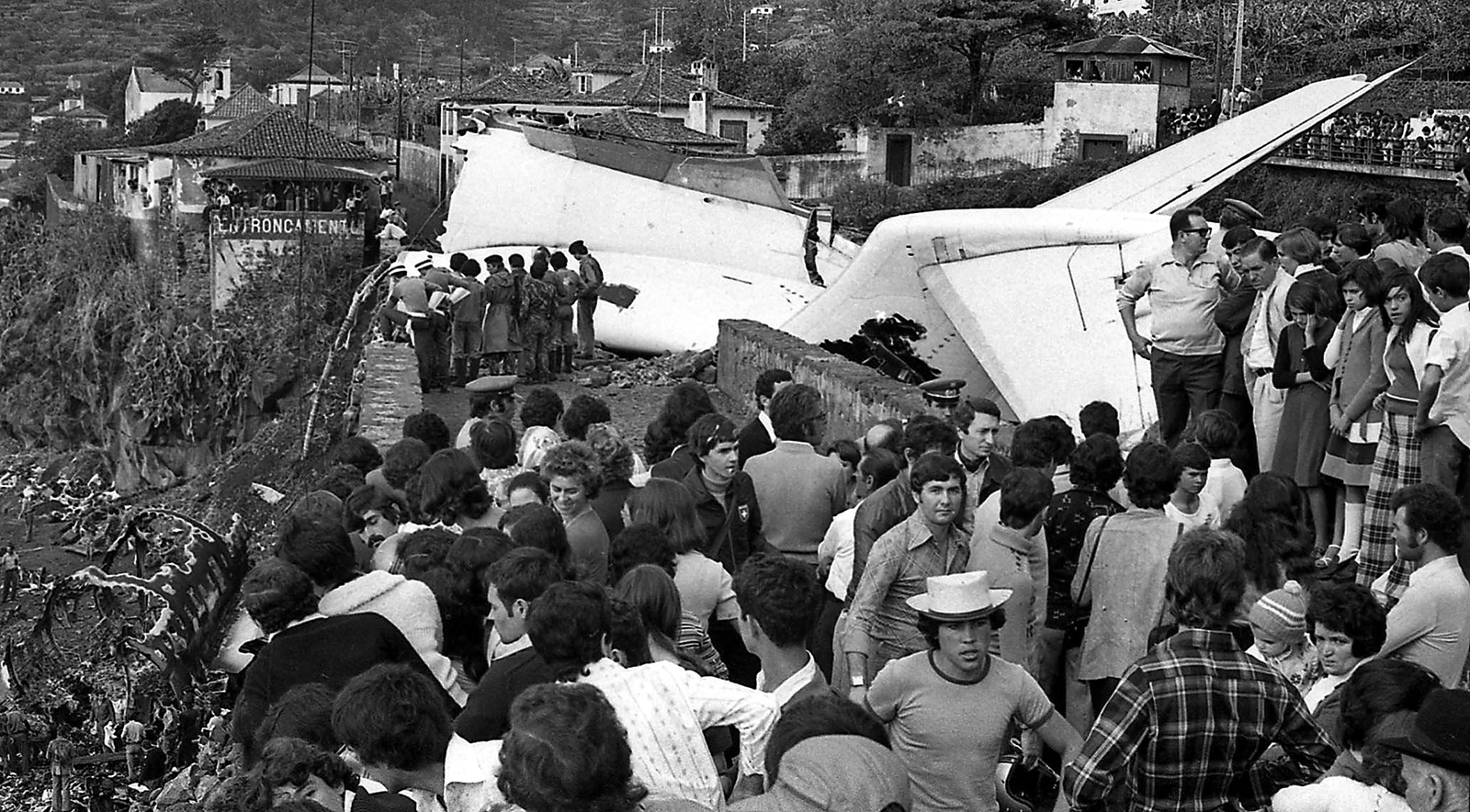Crash of a Boeing 747SP-44 in Maputo
Date & Time:
Oct 5, 1998 at 0955 LT
Registration:
ZS-SPF
Survivors:
Yes
Schedule:
Maputo - Lisbon
MSN:
21263
YOM:
1977
Crew on board:
16
Crew fatalities:
Pax on board:
50
Pax fatalities:
Other fatalities:
Total fatalities:
0
Circumstances:
Shortly after takeoff from Maputo Airport, while climbing, the engine n°3 failed, exploded and caught fire. Debris struck the engine n°4 and punctured the right wing and a fuel tank, causing a severe fire. The crew was cleared for an immediate return. Following a normal approach and landing, the aircraft was stopped on the main runway and all 66 occupants evacuated safely. The aircraft was considered as damaged beyond repair.

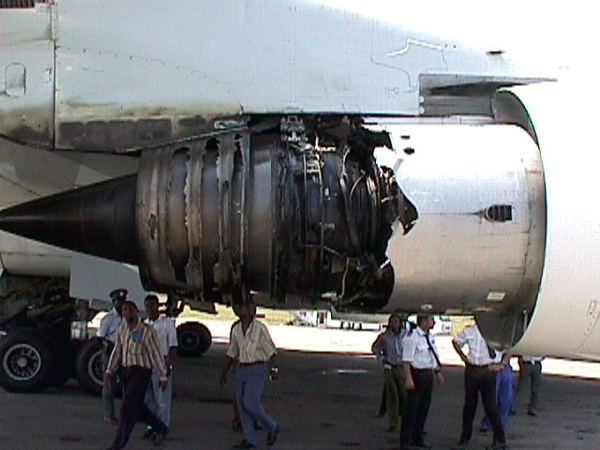
Crash of an Antonov AN-12BP in Lajes: 7 killed
Date & Time:
Feb 4, 1998 at 2217 LT
Registration:
LZ-SFG
Survivors:
No
Schedule:
Lisbon – Ponta Delgada – Lajes – Lisbon
MSN:
3 3 416 05
YOM:
1963
Flight number:
LXR513
Crew on board:
7
Crew fatalities:
Pax on board:
0
Pax fatalities:
Other fatalities:
Total fatalities:
7
Captain / Total hours on type:
3104.00
Copilot / Total hours on type:
1772
Aircraft flight hours:
12492
Aircraft flight cycles:
7005
Circumstances:
The four engine aircraft was completing a mail flight from Lisbon to Ponta Delgada and Lajes and back to Lisbon. On the last leg from Lajes to Lisbon, the cargo consisted of 1,693,5 kg of cargo and mail. Shortly after takeoff from runway 33, while in initial climb, the engine n°3 failed and its propeller autofeathered. Six seconds later, the engine n°4 failed as well. The aircraft went out of control and crashed in hilly terrain not far from the airport. The aircraft was destroyed and all seven occupants were killed.
Probable cause:
The following factors were identified:
- Engines n°3 and 4 stoppage at takeoff due to incorrect selection of the Fuel System,
- Interruption of the checklist sequence in the attempt to transfer fuel from the lower tanks to the wings, which may have contributed to the incorrect selection of the Fuel System,
- The cargo was not secured may have contributed to the deterioration of the stability and controllability of the aircraft,
- The impossibility to retract the landing gear, in time, which contributed to the decrease of the aircraft performance.
- Engines n°3 and 4 stoppage at takeoff due to incorrect selection of the Fuel System,
- Interruption of the checklist sequence in the attempt to transfer fuel from the lower tanks to the wings, which may have contributed to the incorrect selection of the Fuel System,
- The cargo was not secured may have contributed to the deterioration of the stability and controllability of the aircraft,
- The impossibility to retract the landing gear, in time, which contributed to the decrease of the aircraft performance.
Final Report:
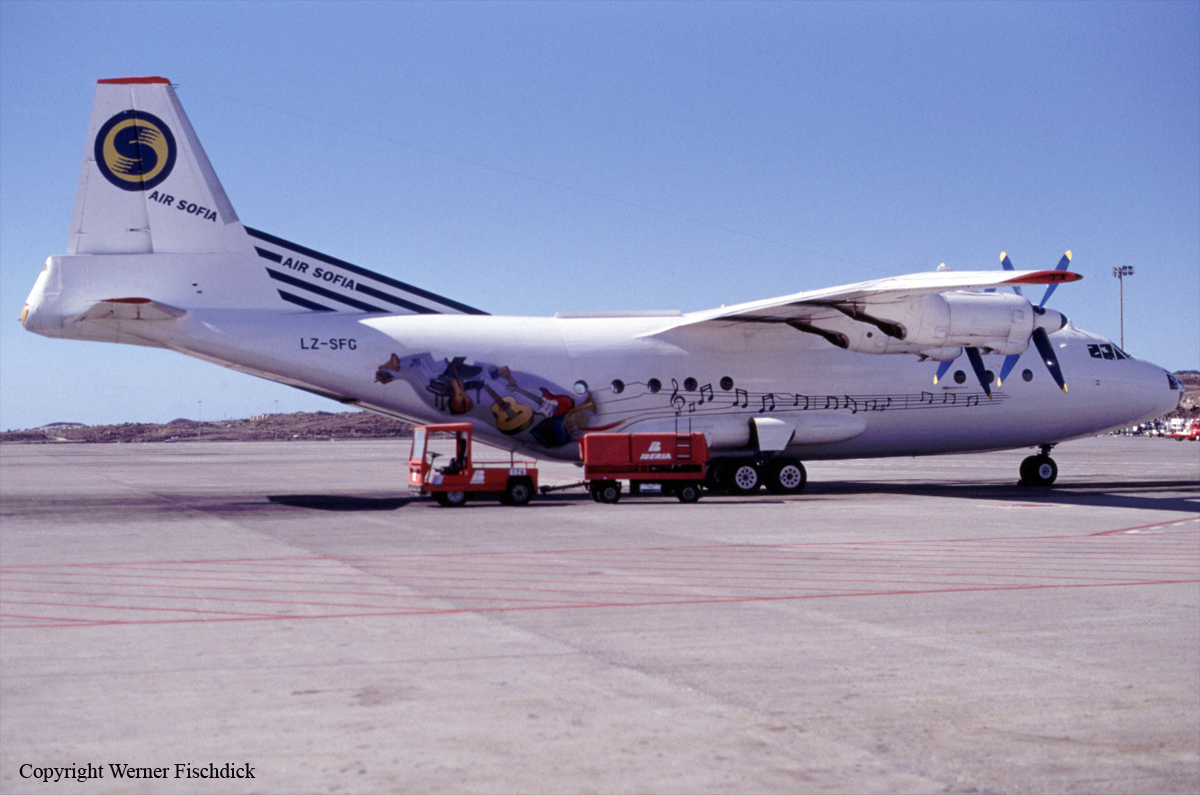
Crash of a Britten-Norman BN-2A-8 Islander in Bragança
Date & Time:
May 8, 1994 at 1200 LT
Registration:
CS-DAF
Survivors:
Yes
Schedule:
Lisbon - Bragança
MSN:
691
YOM:
1973
Crew on board:
2
Crew fatalities:
Pax on board:
2
Pax fatalities:
Other fatalities:
Total fatalities:
0
Circumstances:
En route from Lisbon to Bragança, while cruising at an altitude of 8,000 feet over clouds, the right engine suffered vibration. Few minutes later, the crew decided to shut it down and its propeller was feathered. As the crew was unable to maintain a safe altitude on one engine, he decided to descend and to attempt an emergency landing on a road. On final, the aircraft struck trees and crashed. All four occupants were slightly injured.
Crash of a Learjet 23 in Lisbon
Date & Time:
Jan 30, 1989
Registration:
F-GDAV
Survivors:
Yes
Schedule:
Paris - Lisbon
MSN:
23-017
YOM:
1965
Crew on board:
2
Crew fatalities:
Pax on board:
0
Pax fatalities:
Other fatalities:
Total fatalities:
0
Circumstances:
For unknown reasons, the twin engine aircraft belly landed at Lisbon-Portela de Sacavém Airport and slid for few dozen meters before coming to rest. Both pilots were uninjured while the aircraft was damaged beyond repair.
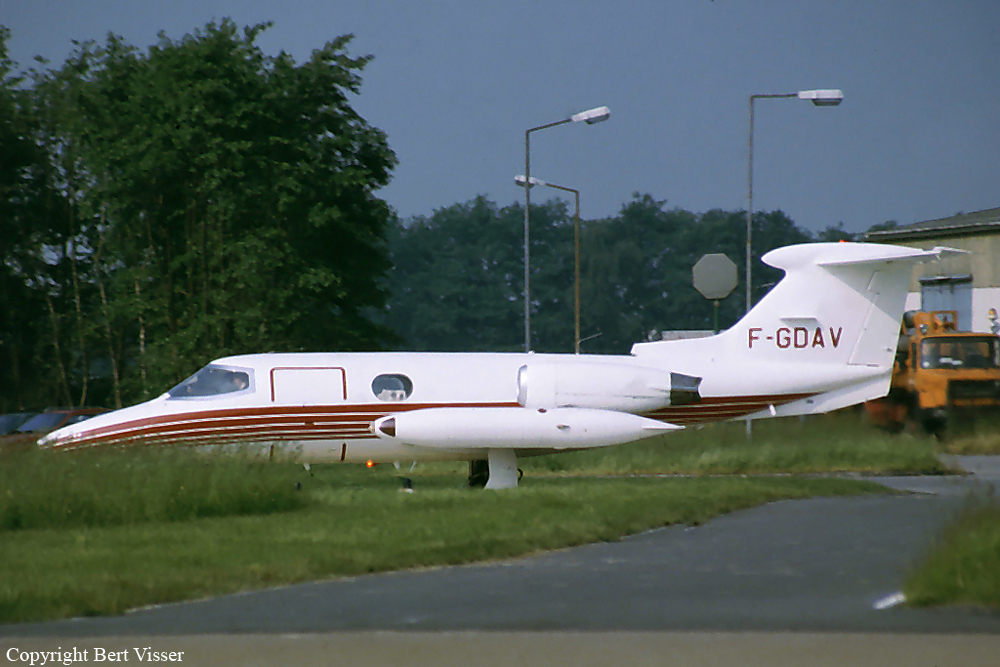
Crash of a Cessna 421A Golden Eagle I in Lisbon: 7 killed
Date & Time:
Dec 4, 1980 at 2016 LT
Registration:
YV-314P
Survivors:
No
Schedule:
Lisbon - Porto
MSN:
421A-0040
YOM:
1969
Crew on board:
2
Crew fatalities:
Pax on board:
5
Pax fatalities:
Other fatalities:
Total fatalities:
7
Captain / Total hours on type:
42.00
Aircraft flight hours:
1500
Circumstances:
The twin engine airplane, chartered by the Portuguese Government, was engaged in a special flight from Lisbon to Porto, carrying various members of the Portuguese Government. Shortly after takeoff from Lisbon-Portela de Sacavém Airport, while climbing by night, the twin engine airplane lost height and crashed onto several houses located in the district of Camarate. The aircraft was totally destroyed and all seven occupants were killed. There were no casualties on ground.
Occupants:
Mr. Francisco Sa Carneiro, Prime Minister,
Mrs. Francisco Sa Carneiro,
Mr. Amaro da Costa, Minister of Defence,
Mrs. Amaro da Costa,
One Chief of Cabinet and two pilots.
Occupants:
Mr. Francisco Sa Carneiro, Prime Minister,
Mrs. Francisco Sa Carneiro,
Mr. Amaro da Costa, Minister of Defence,
Mrs. Amaro da Costa,
One Chief of Cabinet and two pilots.
Probable cause:
The loss of control during initial climb was the consequence of the combination of the following factors:
- Poor flight preparation on part of the crew,
- Inadvertent shutdown of the left engine during initial climb for unknown reasons,
- The left propeller was not feathered, causing high drag,
- The flaps were not deployed in the correct position for takeoff,
- The CofG was off limits,
- Negligences of those responsible for planning and safety in the air transport of important figures of State, in an aircraft of foreign registration whose maintenance status was not previously maintained rated,
- Crew fatigue,
- Crew psychic stress accumulation.
- Poor flight preparation on part of the crew,
- Inadvertent shutdown of the left engine during initial climb for unknown reasons,
- The left propeller was not feathered, causing high drag,
- The flaps were not deployed in the correct position for takeoff,
- The CofG was off limits,
- Negligences of those responsible for planning and safety in the air transport of important figures of State, in an aircraft of foreign registration whose maintenance status was not previously maintained rated,
- Crew fatigue,
- Crew psychic stress accumulation.
Final Report:
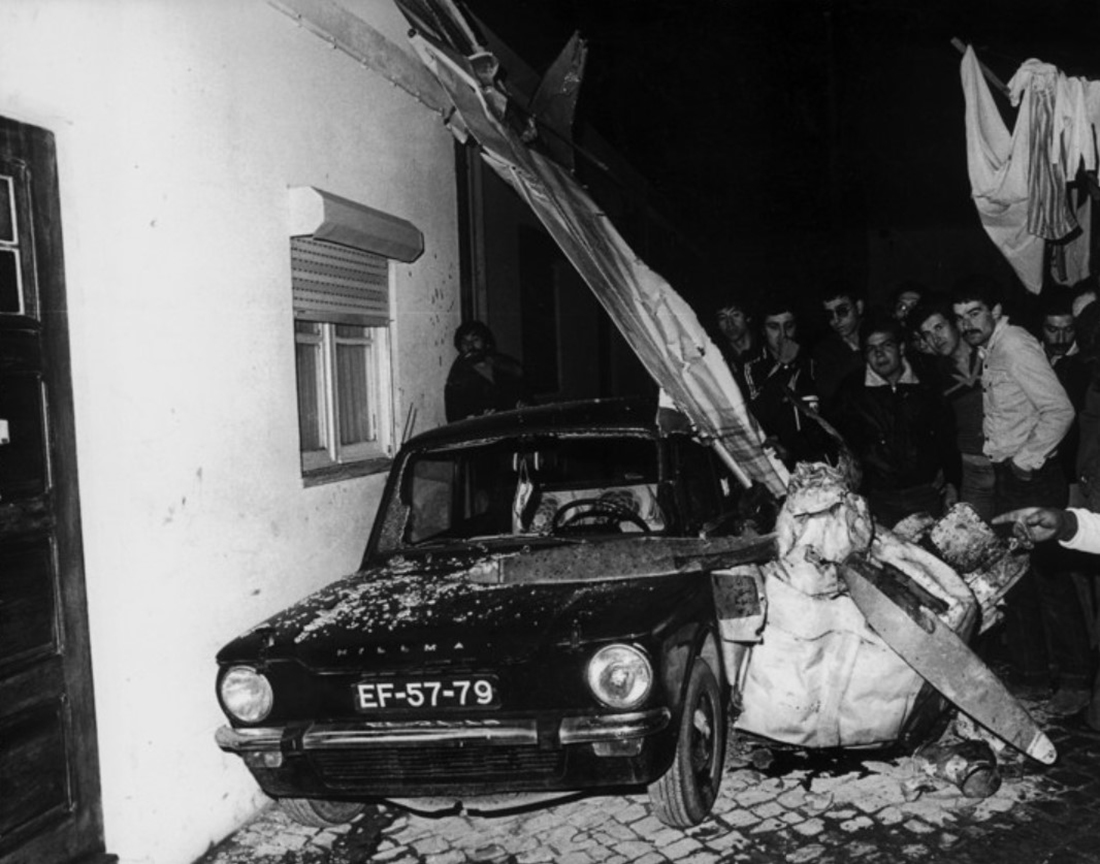
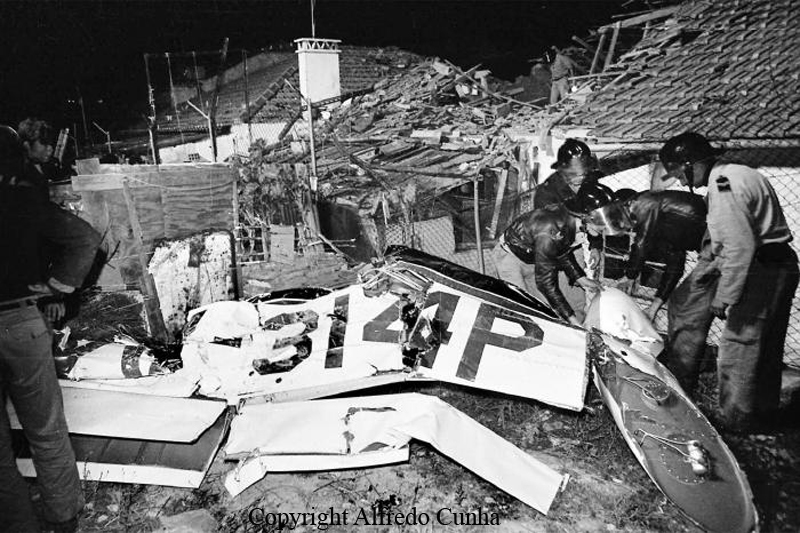
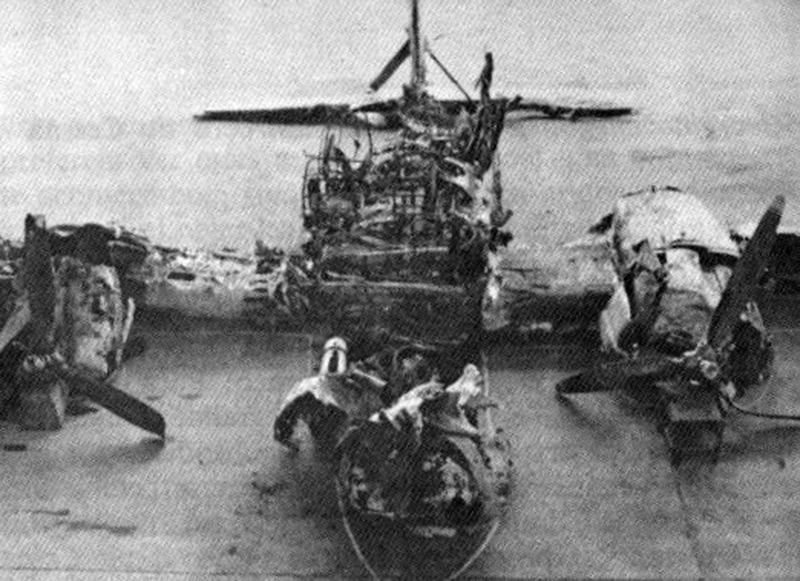
Crash of a Boeing 727-282 in Funchal: 131 killed
Date & Time:
Nov 19, 1977 at 2148 LT
Registration:
CS-TBR
Survivors:
Yes
Schedule:
Brussels - Lisbon - Funchal
MSN:
20972
YOM:
1975
Flight number:
TP425
Crew on board:
8
Crew fatalities:
Pax on board:
156
Pax fatalities:
Other fatalities:
Total fatalities:
131
Aircraft flight hours:
6154
Aircraft flight cycles:
5204
Circumstances:
While descending to runway 24 on an NBD approach, the crew encountered poor weather conditions with limited visibility to 3 km, clouds down to 1,500 feet and rain falls. Unable to establish a visual contact with the runway, the pilot-in-command initiated a go-around. Few minutes later, while on a second attempt to land, the crew landed too far down, about 2,060 feet past the runway threshold (runway 24 is 5,000 feet long) at a speed of 148 knots. Immediately after touchdown, the crew activated the thrust reversers and deployed the spoilers but unable to stop on a wet runway, the airplane overran. It went down a steep embankment, collided with a stone bridge, broke into several pieces and eventually came to rest in flames on a beach located about 40 meters below airfield elevation. The aircraft was totally destroyed by impact forces and a post crash fire. Six crew members and 125 passengers were killed while 33 other occupants were seriously injured.
Probable cause:
The accident was the consequence of the combination of the following contributing factors:
- Very unfavorable weather conditions at the time of landing,
- Possible existence of conditions for hydroplaning,
- Landing at a speed of Vref + 19 knots,
- Landing long with a too long flare,
- Sudden directional correction after touchdown on the runway.
- Very unfavorable weather conditions at the time of landing,
- Possible existence of conditions for hydroplaning,
- Landing at a speed of Vref + 19 knots,
- Landing long with a too long flare,
- Sudden directional correction after touchdown on the runway.
Final Report:


